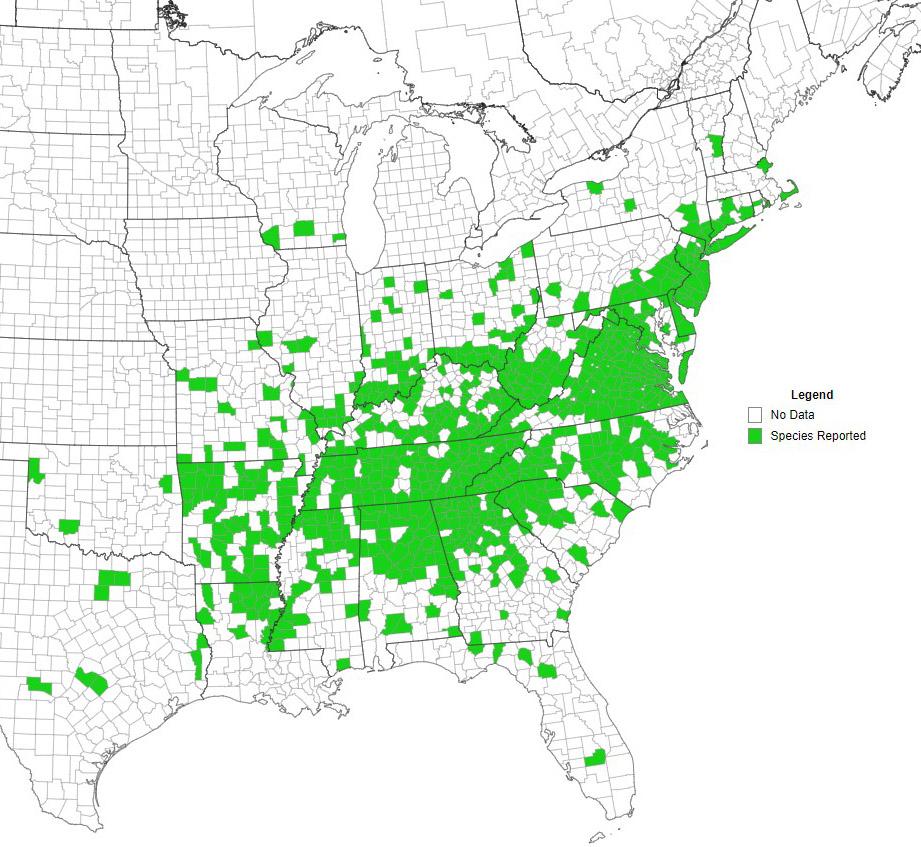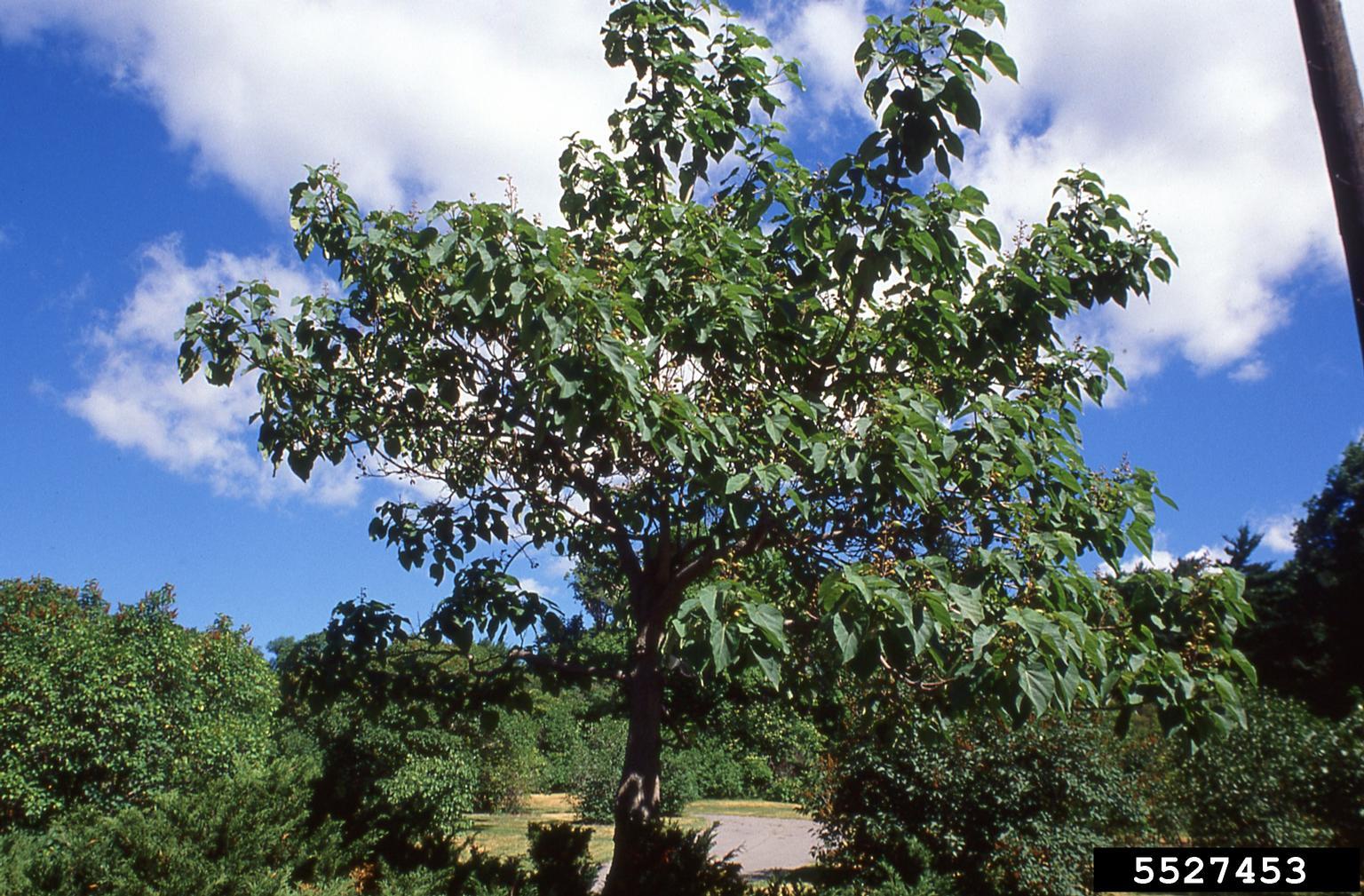From Winter 2023 issue of Branching Out. Subscribe to Branching Out here. Read more Invasives in Your Woodland articles here. This article contains information current as of date of publication.
Regular readers of this feature will recall that many of the invasive plant species we’ve highlighted were originally imported from Asia with a variety of intentions, such as for ornamental purposes or for soil stabilization or conservation. In the case of this issue’s feature, Princess tree was first imported from China to Europe and then to North America. The Dutch East India Company brought it to Europe in the 1830s and to these shores in 1840. In its native territory of central and eastern China, the tree, also called “Empress Tree,” “Royal Paulownia,” or simply “Paulownia,” is highly prized for carving, and ancient records record its uses for construction, ornamental, and medicinal uses. Perhaps the Dutch East India Company had those uses in mind. Instead, the species has become a widespread invasive throughout much of the mid-Atlantic and mid-South states as far west as Texas, along with two counties in Oregon. It is reported in most of Virginia and all of Delaware, and across southeastern Pennsylvania. It is reported across Maryland, where both the DNR and the Department of Agriculture list it as a dangerous exotic invasive, and where the Maryland Invasive Species Council lists it as an “invasive species of concern.”

What is it?
Princess tree (Paulownia tomentosa) is a medium-sized tree that can grow up to 60 feet tall and two feet in diameter. It is an aggressive invasive that invades disturbed areas such as roadsides and stream banks. In woodlands, it can colonize areas that have been burned or defoliated due to insects such as spongy moths.
How does it spread?
Princess tree spreads in two ways: by root and by seed. The root sprouts can grow up to 20 feet in a growing season. The root branches are shallow and horizontal without a taproot. Seed production begins well before spring, as seed-forming pollen develops before winter. The insect-pollinated flowers open in spring, and each tree is capable of producing an estimated twenty million seeds. These are transported by wind and water, and can germinate soon after reaching suitable soil. Seedlings can flower in as little as 8 years.
How can I identify it?
The tree has a rough, grey-brown bark that is interlaced with shiny, smooth areas. Leaves are large (6-12 inches), broadly oval or heart-shaped. They are arranged in pairs along the olive-brown to dark brown stems, and hairy on both sides. The flowers can grow to 2 inches in length, and are a fragrant violet-pink in color. They grow in upright clusters in early spring before the leaves emerge. The fruit develop in late summer as elongated egg-shaped capsules with four chambers that contain the seeds. The green fruit turn brown in the fall and remain on the tree during the winter, which aids in identification. Come spring, the fruit splits open, releasing up to 2,000 tiny, winged seeds per capsule. See the image gallery below.
How can I control it?
Princess tree is best controlled when young, as seedlings have very shallow roots that can be removed by hand pulling. Be sure to remove the entire root as broken segments can re-sprout. Mature trees can be cut by hand or mechanically at ground level; the best time to cut is during flowering to prevent seed production. Because the tree can re-sprout via suckering, a follow-up cut-stump herbicide treatment is effective. Foliar treatments are only recommended for small trees to prevent spray drift onto non-target species.
For more information:
Learn more about Princess tree:
Royal Paulownia: a royal pain (Joyce Browning, Harford County Master Gardener Program)
Least Wanted: Princess Tree (Plant Conservation Alliance, Alien Plant Working Group)
Weed of the Week: Princess Tree (USDA Forest Service)
